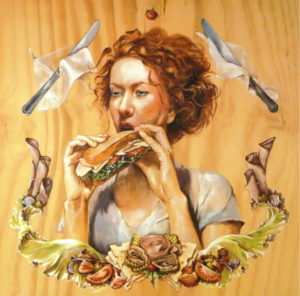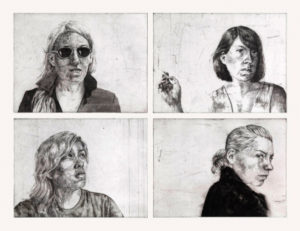“Make the art and show up on time.”
Last week I spent a few hours with another artist as an awards juror for a student show at one of the community colleges. It’s a visually exhausting job. Much to consider with work ranging in skill and sensibility from core foundations courses to advanced studio classes. Sensory overload.
A few days after the juror gig, a friend posted a docu-video of art critic, Mat Gleason, “The Hung Juror in Las Vegas”. The video was a documentary/reality TV styled record of Gleason as he juried…curated (his word) the entries for the CAC 23rd Annual Juried Show at the Contemporary Art Center in Las Vegas. An opportunity to see the process from the juror’s view.
For the sake of clarity and a bit of context, Mat Gleason is an art critic/blogger in L.A. writing for the Huffington Post. He is a bit unconventional. Still, the contemporary art world isn’t known for much regarding convention. Other adjectives thrown about Mr. Gleason are cynical, provocative, and anti-academic.
I don’t agree with him in many areas – particularly concerning arts education/theory, criticism, purpose…and, well…we disagree. Nonetheless, there are things that he and I would not only agree, but support each others’ hypothesis.

In this video, Gleason makes several statements that artists should take into consideration when entering a juried competition.
During the process of studying the 614 submissions to this exhibition, Gleason comments, “Rejection is part of it. To be rejected in a juried show, you have to have a thick skin.”
Over 300 artists entered the show. Less than 10% were chosen to actually exhibit. That’s fairly standard. He’s right. So, expect that letter…it begins,
“Dear Artist,
Thank you for submitting to (insert show title here). We appreciate the opportunity to view your work. However, we regret to inform you that your work was not chosen. The jurors had a challenging task in selecting work from over (x) number of submissions….”
Yeah, yeah, we get it. You will see a lot of these! Our critic states, “The art world exists to deny.”
In reference to abstract painting, Gleason questions,
“Is it refined or is it sloppy? Sloppy is just an attempt to be authentic. So much art tries to be authentic. Instead of just being authentic, they go to art school, read it in a book, or see somebody and try to emulate what they’re doing and they make art that is just inauthentic.”
I don’t completely agree with his justifications. His use of the term ‘sloppy’ doesn’t refer to craftsmanship so much as to a process, a ‘why’. At it’s core, this is about creating work with purpose and appropriately placed motivation. Gleason and I diverge widely on ‘purpose’. A discussion for another day.

Having years of curatorial experience and many hours devoted to this exhibit, Gleason notes,
“Looking at images, especially on a computer screen, the black line really gets emphasized. Juried shows tend to have art in them with a lot of black lines. And it’s…there’s a seductive quality to the black lines…. Knowing that, I do try to compensate. That’s the result of having juried shows and then seeing the art in person and having a certain level of disappointment at some of it, that it looked better glowing on a screen than it does in person.”
If I had a nickel every time I’ve told students that they MUST have good images and keep editing to a minimum…well, I’d be a very wealthy woman. If your work looks better ‘glowing’ on a screen than it does in person, remember the gallery can still reject the work if they feel the image varies considerably from the actual work. In that case, you’ll get the rejection letter and your work sent back to you. BONUS!!
While reviewing images, Gleason pauses to address the viewer, “Tribal tattoos are not the subject of painting. I try to be open minded…that’s where the line is. It looks good on your skin, doesn’t look good on canvas.”
Um…yeah. Read that again if you need to. Commit it to memory if necessary.
Because the nature of jurying shows in the 21st century is primarily on a computer monitor, there are considerations in judging a 2-D glowing image rather than the imperfections of analog images or actual work. As the jurying process continues, Gleason makes this point,
“I have to be careful to then seriously look at the art that’s in the order around it.
‘You rejected me for the show.’
‘Hey, it was a great painting but it was next to this disgusting photo of…oh, I can’t even tell you what was in it. It was so disgusting.’
So, I can’t go (tapping the forward button). Look away! Look away! That’s not fair.”
Just keep this in mind. Perhaps it’ll provide some comfort when you get that much anticipated letter in the mail.
One final consideration from the video, remember that jurors approach your art with experiences, with baggage, with a past. Gleason states, “Every critic has biases. I’m biased. I’m the juror.”
*post title: When asked by art critic, Brian Sherwin in an earlier interview, what advise he would give emerging artists, Mat Gleason responded, “Make the art and show up on time.”